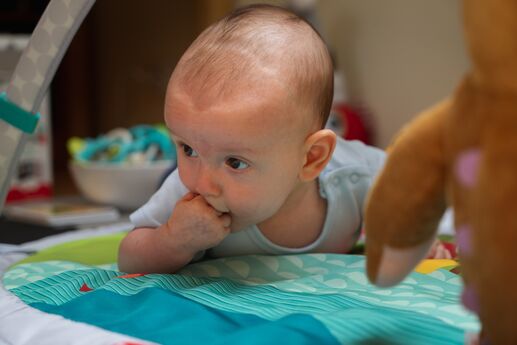Practical Gifts to Help a New Dad Prepare
As soon as our families and friends found out my wife and I were expecting two bundles of joy, the planning of baby showers began. Throughout all of the showers (we had four!), we were blessed with various gifts that were great not only for our daughters, but also for the new mom and new dad.
A few specifically, though, stuck out as ones that would really help me in my newfound fatherhood.
An Awesome Book
Books that help new dads prep for their babies are a great gift idea; the books are useful before the baby arrives, as well as afterwards as a point of reference. When we were waiting for our twins to be born, we were given one in particular that really helped us get ready to have two new little ones in our house.
An Extra Loud Alarm Clock
I got this gift at one of our first showers, and it was supposed to simulate a baby crying in the night. Since I’m such a deep sleeper, I wasn’t sure it would work on me. However, once the alarm went off, I shot right out of bed. This was an extremely beneficial new dad gift during the early weeks and months that the girls were not sleeping through the night.
A Mini Video Camera
We got this gift at a shower, and we used it to chronicle my wife’s pregnancy, as well as our time in the hospital and all of the special moments since. What we love about our specific camera is that it’s small enough to fit in our pockets, and it can be quickly plugged into a computer to upload videos. What’s even better is that, as a new dad, all I want to do is share these great memories with our daughters throughout the years with friends and family, and now, we can do that.
The Gift of Advice
I think this can be said for parents of multiples or singletons: You have to find what works for your family. Regardless of what all the “expert” books say, you have to find a system that is right for your house. Factors like the number of hours worked by the parent(s), available babysitters, and other daily tasks can impact whether or not your baby or babies need to be on a set schedule. Some helpful new dad advice I received from other parents of multiples included feeding both babies at night, even when only one of them woke up originally. In terms of toys and swings and walkers, we didn’t necessarily need two of every item. Instead, we were advised to wait to see if both babies enjoyed the toy before buying two. Practical advice from a been-there-done-that dad is one of the best new dad gifts you can give.
Photo by Aleksandra Rupar on Unsplash







